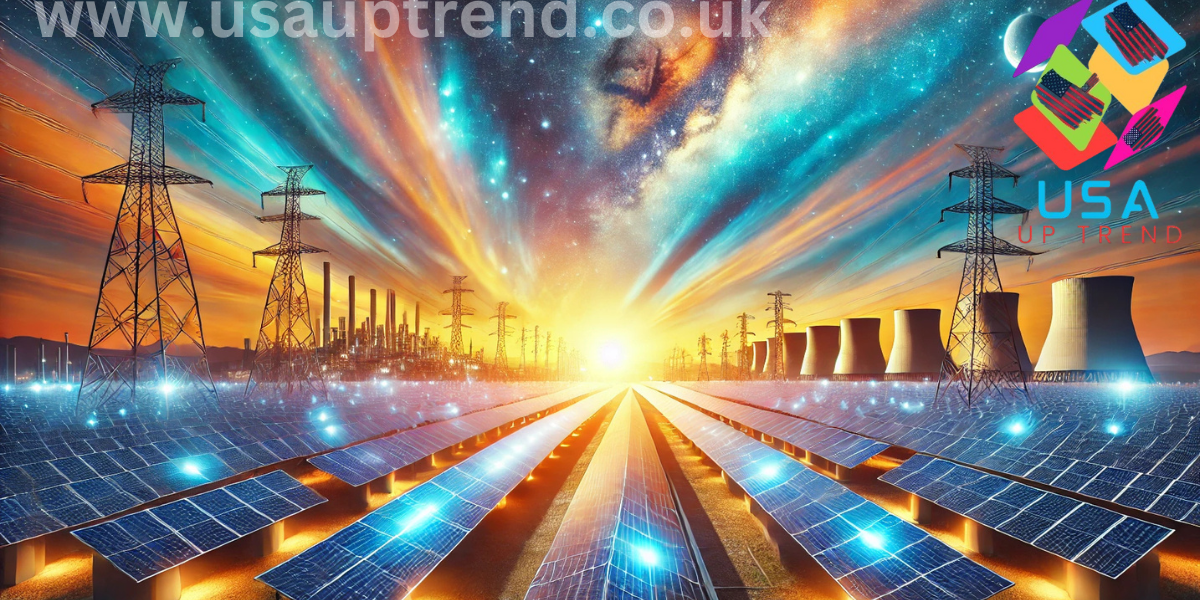Energy in the largest power plant for sun in the world is generated based on the superpower of the sun. Its location in the Antelope Valley of California and its coverage on a massive space, the role of the place in moving from dirty sources to clean ones as well as sustainable energy makes this place really worthwhile. How is the energy produced for Solar Star Power Plant? This question takes us on a journey through the technologies and processes involved in generating solar energy on a massive scale. In this blog, we’ll explore how the energy is produced, the technology behind it, and the environmental and economic benefits Solar Star brings.
What is Solar Star Power Plant?
Before answering the central question on how the energy is produced in Solar Star Power Plant, a background of what the plant looks like and why it was developed is important to know. Over California’s desert landscapes, a very large solar photovoltaic power facility stretches the horizon. Once completed, the Solar Star power facility will generate more than 579 MW in power, hence powering hundreds of thousands of U.S. homes.
This contains hundreds of thousands of solar panels covering an area of 3,200 acres. It is considered to be one of the largest operating solar PV plants worldwide. The operation of such massive solar PV plant increases the utilization of renewable sources of energy.
The primary method of producing energy for Solar Star Power Plant is converting sunlight into electricity with solar panels. Let’s move on to discuss the details of how this process works.
Understanding the Solar Power Generation Process
In order to know how the energy is produced for Solar Star Power Plant, one must know first of all, the general mechanism of the conversion of solar energy. Actually, solar panels are based on photovoltaic effect. In short words, sunlight caught by the solar cells available within the panel transforms into electricity. Let’s take a closer look at this procedure.
1. Absorption of incoming solar radiation
It is here that sunlight begins the first stage of creating solar power by striking the surface of the solar panel. Such a panel comprises several solar cells filled with semiconductor material, mainly silicon. Once these cells get hit by the sunlight, they stimulate the electrons trapped inside the semiconductor to come loose from the atom.
2. Electric Current Generation
As the electrons are knocked loose, they create an electric current, which is the fundamental component of the energy produced for Solar Star Power Plant. However, the energy is initially in the form of direct current (DC). The generation of electricity in DC is a fundamental process in the production of solar energy, but it’s not compatible with most electrical appliances or grids.
3. Inverter Conversion
To make the electricity usable, however, it is necessary to be converted from direct current to alternating current. To do this conversion, inverters are used to change the flow of the currents. The alteration of DC into AC is then necessary to transfer the energy outputted to supply the electrical power grid, making it available to homes and industries.
4. Transmission to the Grid
Once it is converted into AC power, it is distributed to the grid. That is where the solar power plant is connected with homes, businesses, and industries. The electricity produced at Solar Star contributes significantly to the reduction of the reliance on the nonrenewable sources of energy like coal and natural gas.
5. Energy Storage (Optional)
Although the sun produces solar energy best and most efficiently during the daytime, it does not stop generating electricity at sunset because it will create power all other times of day. Some power plants, even Solar Star may employ storage capacity such as heavy batteries that might store some electricity generated at peaking sun times. Such backup reserve pools tap through the night time or on cloudy days, ensuring a steady, constant power feed.
The Role of Solar Panels in Energy Production
Energy production in the plant at Solar Star is directly related to the use of the solar panels. The designers create the panels in such a way that they are very efficient and they construct them using advanced materials that maximize the amount of light absorbed. Due to this fact, they follow the sun throughout the day by using tracking systems, which ensure that they remain oriented toward the sun and absorb as much light as possible.
Other than high efficiency, Solar Star designs the panels to last for a long period. California’s arid desert environment is extremely hot and dry in some areas, thus, the panels have to be durable enough to handle extreme conditions. The quality of solar panels installed in Solar Star is high and lasts for over 25 years or even longer, thus contributing to the plant’s longevity and reliability.
How Solar Star Maximizes Energy Production
Solar Star Power Plant uses various strategic approaches that increase the generation of energy. Due to the immense size, it can cover an enormous area where sunlight falls and advanced tracking systems ensure the alignment of the panels with the sun. All these methods tend to increase energy generation even in cases of clouded weather or inadequate sunlight conditions.
Benefits of Solar Star Power Plant
The energy generated for the Solar Star Power Plant offers an extensive range of benefits, from the environmental point of view and the economic point of view. Some of the most important are as follows.
1. Minimization of Greenhouse Gas Emissions
One of the advantages of Solar Star operations lies in carbon emission reduction. Unlike the traditional fossil fuel-based power plants, which emit harmful gases such as carbon dioxide (CO2), a solar power system does not involve such harmful emissions. This makes its impact slightly lesser in harsh effects from climate change while reducing the carbon footprint within the energy sector.
2. Renewable Energy Source
Unlike coal and natural gas which are dwindling resources the solar resource is inexhaustible. The sun produces energy that harnesses electric power, ensuring that after all these decades of constructing such a power plant, no ounce of the natural sources will be wasted.
3. Growth in the Economy and Employment
Large scale solar plants like Solar Star have positive impacts on the local and national economies. These plants create thousands of jobs in installation, maintenance, as well as technical support during construction and operation. At present, significant employment opportunities have arisen as a result of Solar Star in the Antelope Valley region.
4. Energy Independence
Solar Star helps to strengthen national energy independence by lowering dependency on foreign oil and fossils via use of a renewable energy source like the sun. This further provides stable energy prices and improves the integrity of the electrical grid.
Key Data on Energy Production at Solar Star Power Plant
| Factor | Value |
| Location | Antelope Valley, California |
| Size | 3,200 acres |
| Installed Capacity | 579 MW |
| Panels Used | Over 1.7 million solar panels |
| Electricity Produced | Powers over 255,000 homes annually |
| Energy Type | Solar Photovoltaic (PV) |
FAQs about Solar Star Power Plant
1. Why is Solar Star the largest solar power plant in the world?
A footprint of just above 3,200 acres and an operational capacity of 579 MW, Solar Star is one of the biggest solar farms to be operational and feeding power into hundreds of thousands of homes. Big solar really enters the renewable energy markets based on efficiency in converting solar energies into electricity.
2. How does Solar Star aid the realization of renewable energy goals?
By delivering its massive share of clean, renewable energy, Solar Star supports such renewable energy goals of California and of the rest of America. In addition, Solar Star helps reduce greenhouse gas emissions and paves the way for sustainable energy systems.
3. What is the lifespan of solar panels used in Solar Star?
With the life rated at about 25 years, today Solar Star designed solar panels for a long life of service. We have evaluated these panels and selected the best materials to withstand the harsh desert conditions while still ensuring good energy production efficiency.
Conclusion
The energy generated for Solar Star Power Plant emanates from advanced technology in the form of improved quality in solar generation mixed with effective energy conversion and strategic land usage. Currently, by harnessing the power of the sun, Solar Star is able to produce a significant amount of clean and renewable energy that can power homes, lessen carbon emissions, and support economic growth. As the planet goes further along with renewable power sources, great solar farms, like Solar Star, will do their part towards that sustainable power future.
Read more Article about Technology and other Categories at usauptrend.co.uk




